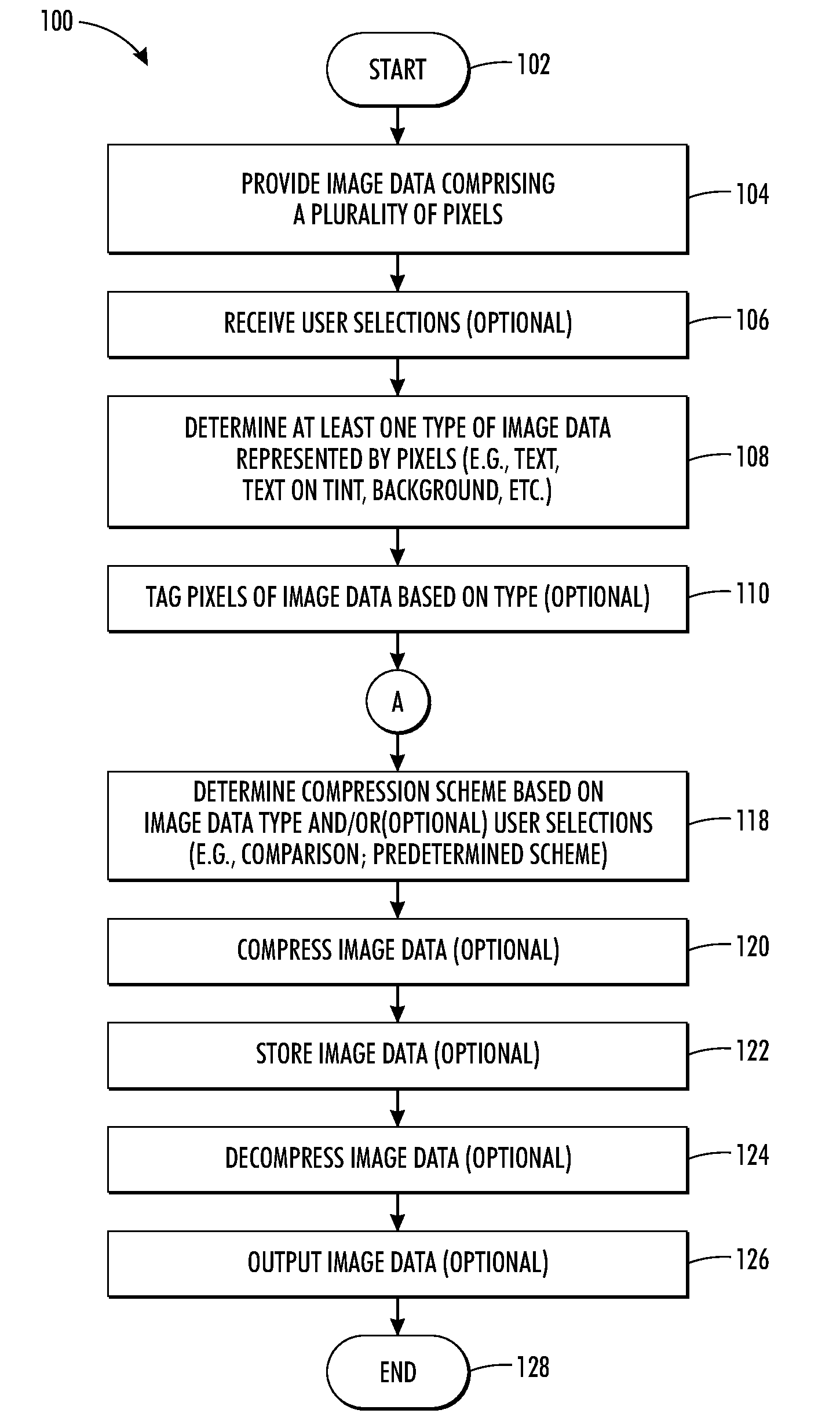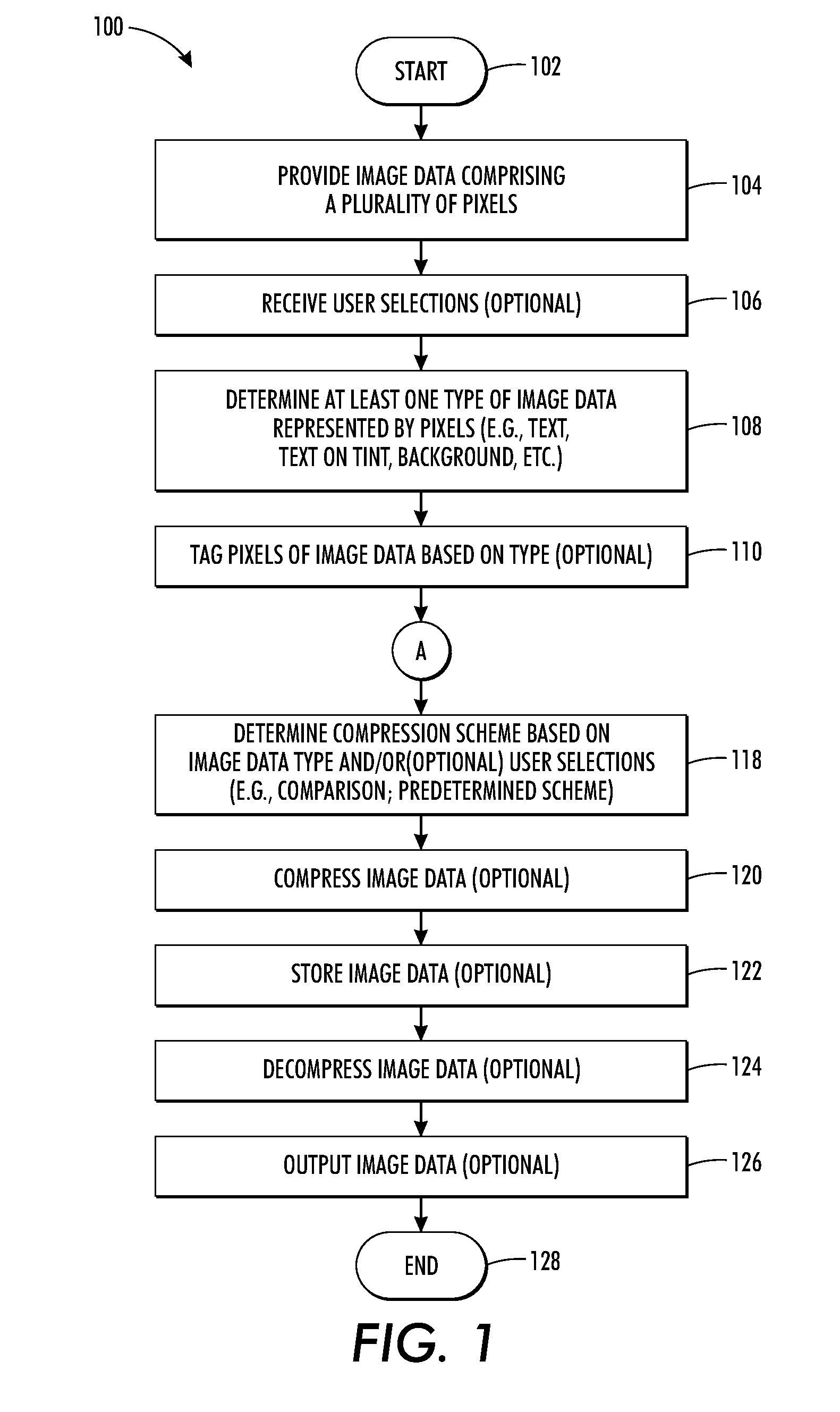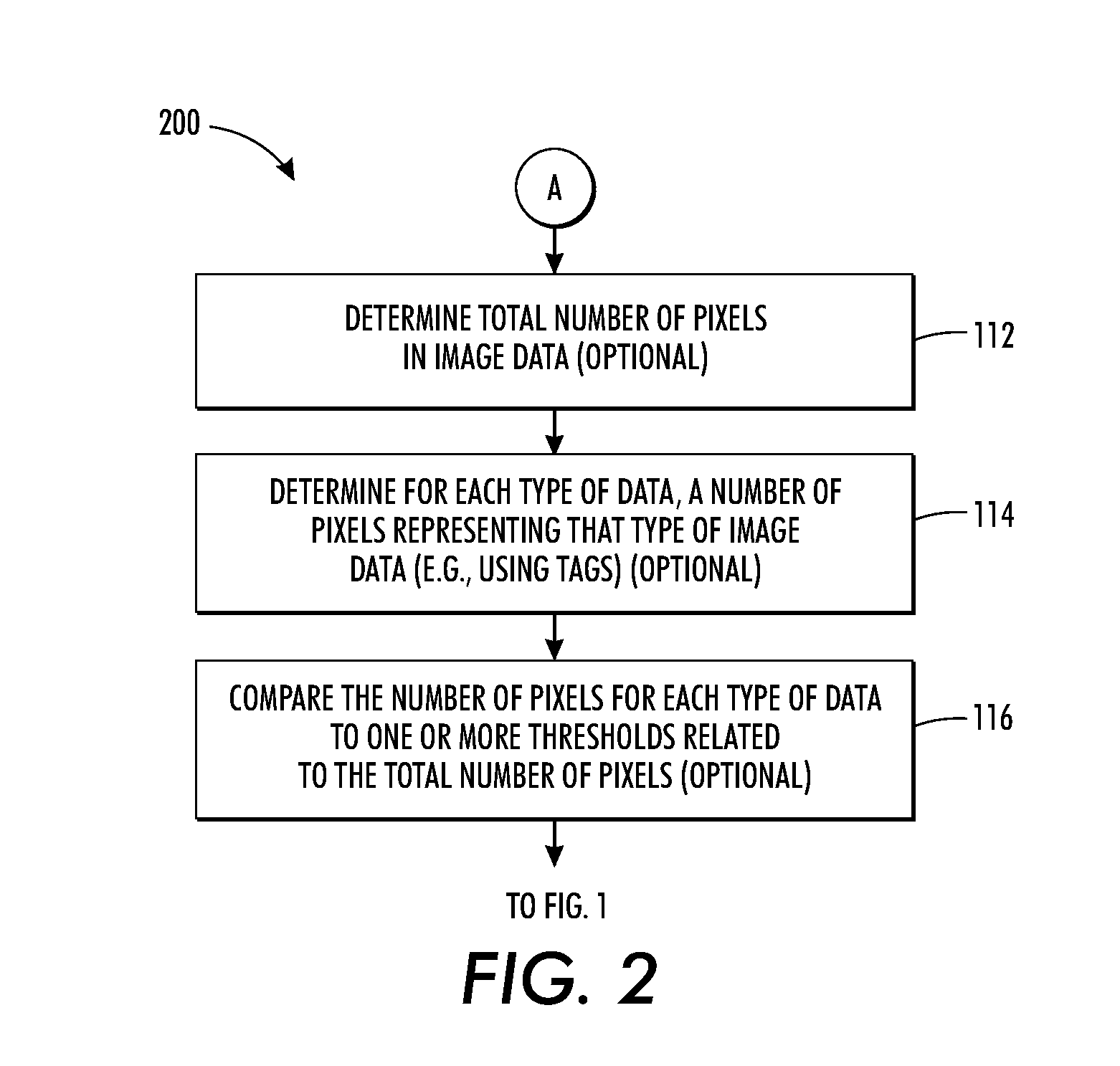Compression scheme selection based on image data type and user selections
a compression scheme and image data technology, applied in the field of compression scheme selection based on image data type and user selection, can solve the problems of poor image quality in some images and poor compression ratio
- Summary
- Abstract
- Description
- Claims
- Application Information
AI Technical Summary
Problems solved by technology
Method used
Image
Examples
example 1
[0057]Image data provided or received by a processor comprises pixels representing data including text, text on tint, and edge information. That is, a page or document comprise three types of image data for processing and compression. As noted above, any number of methods may be used to determine the type of data represented by the pixels of image data (e.g., user selection, processing by the processor, segmentation (e.g., at a front end of the image path), and / or tagging), and such determinations should not be limiting. In this embodiment, each of the pixels are segmented and tagged using segmentation module 158 of FIG. 4 to identify the type of data represented (text, text on tint, or edge) before the compression scheme is determined. The determination of the compression scheme for the image data includes processing the pixels of image data using similar steps shown in method 100 of FIGS. 1 and 2, including counting and comparisons to thresholds based on a total number of pixels i...
example 2
[0062]In this exemplary embodiment, the determination of the compression scheme is limited to being selected from a number of different MRC models. In this embodiment, information regarding how to determine the compression scheme for compressing the image data is based on user input. For example, as noted above, a user may input via a user interface features relating to the image data for consideration. In this embodiment, the determination of the at least one type of data is received by a user's selection regarding the type of image data being originally provided. For example, such original types may include, but are not limited to, text data, mixed data, and / or media (e.g., newspaper, magazine). Also, in this example, a compression quality selected by the user for output of the image data is used to determine the compression scheme.
[0063]As previously noted, an LUT may be used to determine the compression scheme. Table 1 in FIG. 6 shows an example of such an LUT wherein the compre...
example 3
[0064]In this exemplary embodiment, the determined compression scheme is selected based on the user selections as well as the image data type. The image data is segmented and the pixels are tagged. The image data tags indicate pixels representing text, text on tint, pictorial, and background data. To determine the compression scheme, a pixel counter module (such as module 172 in FIG. 4) counts a number of tags representing pixels for each type of data in the image. It then calculates a percentage of each tag from the total pixel count of the image. FIG. 7 illustrates an exemplary flow diagram depicting a method 700 for determining a compression scheme of this image data, which may involve the following steps:
[0065]Part (a)
[0066]1) If the background area (e.g., count of pixels or percentage of pixels) in an image is greater than a first threshold TH1 (i.e., YES), as shown at 702,
[0067]2) Then the text pixels are processed at 704. If their count / percentage is greater than a second thr...
PUM
 Login to View More
Login to View More Abstract
Description
Claims
Application Information
 Login to View More
Login to View More - R&D
- Intellectual Property
- Life Sciences
- Materials
- Tech Scout
- Unparalleled Data Quality
- Higher Quality Content
- 60% Fewer Hallucinations
Browse by: Latest US Patents, China's latest patents, Technical Efficacy Thesaurus, Application Domain, Technology Topic, Popular Technical Reports.
© 2025 PatSnap. All rights reserved.Legal|Privacy policy|Modern Slavery Act Transparency Statement|Sitemap|About US| Contact US: help@patsnap.com



